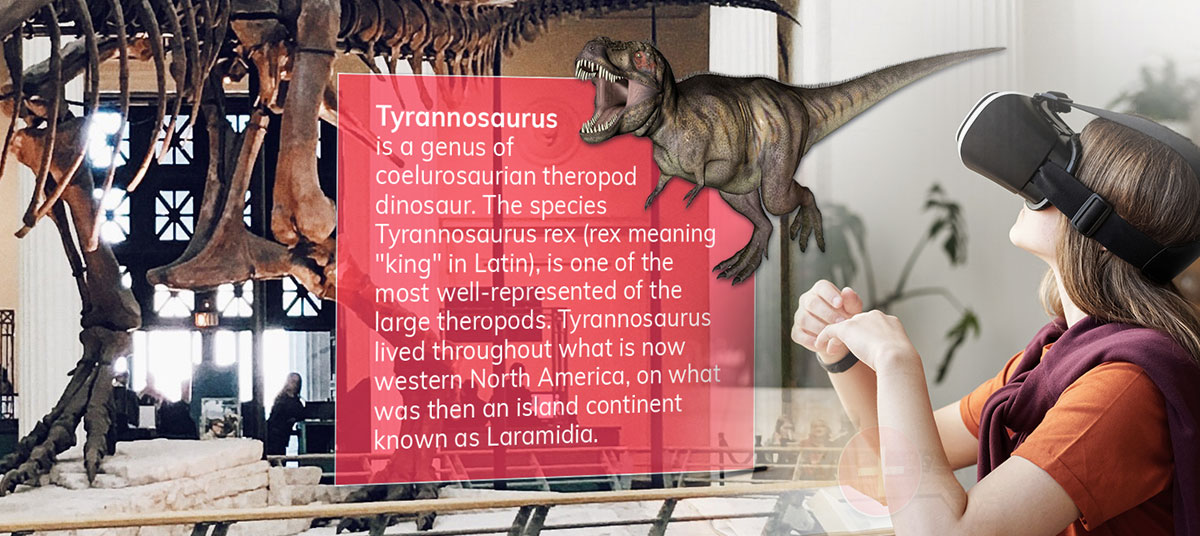VR in Education: A Chance to Digitalize the Educational System?

Education must become better and schools must become more digital. How can virtual reality make education more efficient?
Children are growing up in an increasingly digital society, yet they experience a method shock in schools: knowledge is still taught in old-fashioned ways, and curricula and learning methods are no longer up to date. The Corona pandemic has further highlighted the digital predicament of the German education system: schools are not making any progress in digitization, and funding is bogged down in bureaucracy.
The private sector shows that there is another way. VR is already being used in training to improve the transfer of knowledge and learning outcomes. Prospective doctors, for example, prepare for operations in VR simulations, and apprentices train on virtual machines without having to pause real production.
As a learning tool, VR expands the possibilities for conveying knowledge. In schools, vocational schools, and universities there are numerous possible uses for VR applications.
Virtual reality makes teaching more multifaceted
The nightmare of every chemistry teacher: an accident in the lab. In VR, however, accidents or risky experiments can be deliberately simulated. In this way, knowledge is impressively conveyed without exposing students to real danger.
Excursions to historical buildings or archaeological sites are also possible with VR. Students can see ancient architecture or excavations in three dimensions and in great detail with their own eyes.
The one-dimensional perspective of the textbook is enhanced by immersive and interactive experiences. As a learning tool, VR gives students access to interesting and educational experiences that would only be possible to a limited extent or not at all in reality. This has a positive effect on learning motivation and learning success.
VR supports the learning process
The full immersion in virtual reality excludes distractions from the real world and supports the concentration of the students on the content that is really relevant for knowledge transfer.
Experience a beating heart in the body as a 3D visualization and in its original size? Walk through the Cologne Cathedral in its post-World War II state in VR? The experience factor helps to retain information better.
The immersive perception of the environment strengthens the sense of spatial presence. This makes even difficult subjects, such as complex geometry, easier to understand.
Teachers also benefit from VR technologies when designing their lessons. VR is not intended to eliminate traditional teaching, but when used as an aid, VR applications increase the potential for imparting knowledge.
VR in Education is part of a holistic digitalization strategy
VR teaching formats are therefore considered as part of a holistic digitalization strategy in educational institutions. The synergies with other technologies are an opportunity to further develop digital and effective teaching formats and to expand the training of teaching staff.
The German school Gregor-von-Scherr Realschule in Neunburg, for example, has recognized this opportunity in teaching. Together with VRdirect, it integrated VR teaching formats into the classes of biology, history and art.
The project was a resounding success for the school: In addition to enthusiastic teachers and students, the school received an award from the Bavarian Ministry of Education for its "particularly innovative" idea.
Get the whitepaper "VR in education" from VRdirect now
Get the whitepaper "VR in Education" from VRdirect now. It contains studies on learning successes with VR and information on how educational institutions can successfully enter VR.
VRdirect makes it easy for businesses and educational institutions to get started with virtual reality. Find out more about the benefits and possible applications of virtual reality in businesses, take a look at some projects in the showroom and arrange a no-obligation meeting.
Note: Links to online stores in articles can be so-called affiliate links. If you buy through this link, MIXED receives a commission from the provider. For you the price does not change.